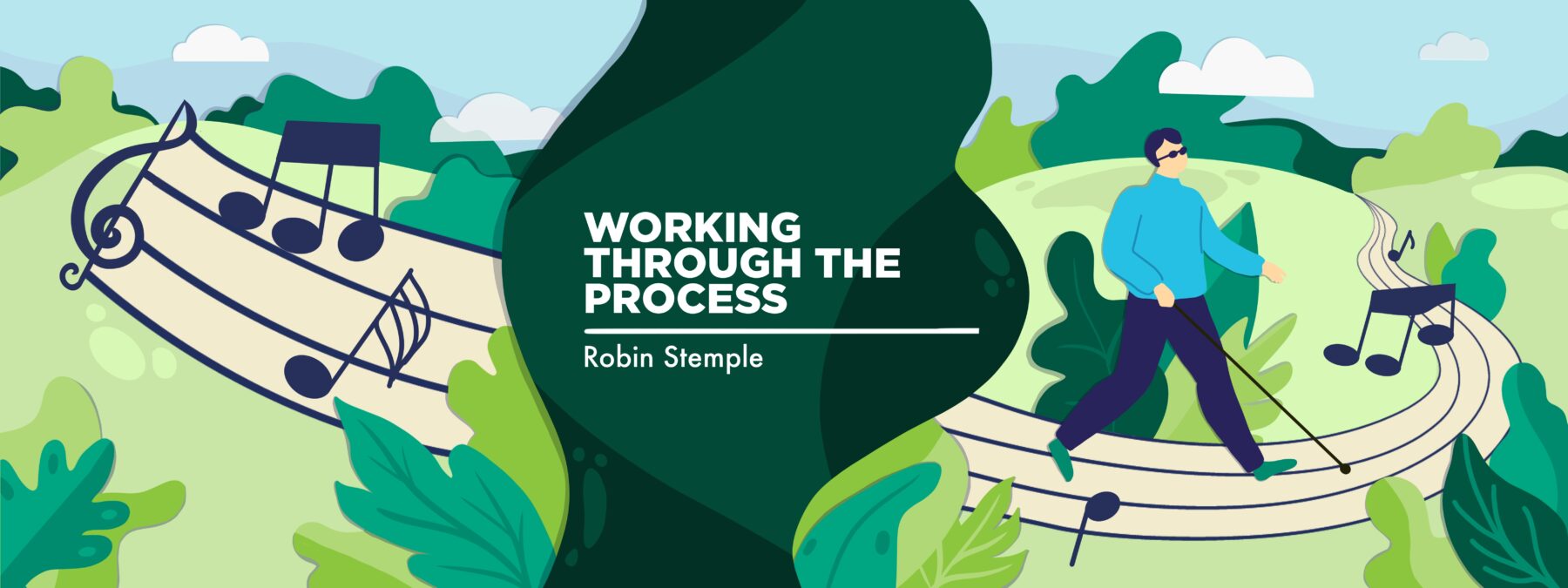What church congregations can do to make things more accessible
You may be surprised by what the ADA says about churches

I was blessed to be able to provide music for the annual gathering of the United Church of Christ’s Penn West Conference earlier this month. Everything went well. My wife, Wendy, had plenty of help moving my equipment into the venue. The technical staff from PennWest California did an excellent job getting everything connected for the live audience and church members who connected via Zoom.
Since the setting for the meeting was a public university, everything was accessible, if not exactly easy or convenient.
I was surprised to recently learn, though, as part of my work on the United Church of Christ Disabilities Ministries board, that religious institutions aren’t required to meet the accessibility guidelines of Title III of the Americans with Disabilities Act (ADA). As chairperson of the board’s “Accessible to All” committee, I’m working to make our churches more accessible, but it’s an uphill battle.
Seeing a need and doing the work
Many of the congregations in the PennWest Conference are shrinking. Most of the buildings we’re using for worship were built long before the ADA was enacted. In many cases, the way they were constructed makes retrofitting for accessibility difficult and expensive, if not impossible.
The church I worshipped in back in the mountains of Southwest Pennsylvania, before my recent move to Pittsburgh, was accessible for the most part. I was president of our governing board in 1988 when, as an Eagle Scout project for one of our young members, we regraded the exterior of the church and made the main entrance accessible.
At that point, the effects of my facioscapulohumeral muscular dystrophy were limited. As a special education teacher, I had time in the summer to help dig footers, shovel dirt, and pour concrete for the project. Little did I know that a year later, as the result of a head-on collision with a drunk driver, I’d be the first person in a wheelchair coming through the door.
Over the years, we installed an accessible restroom in the sanctuary and a ramp to make the chancel area accessible. When we added a social hall, the addition included another accessible restroom and properly equipped doors for easier access by a wheelchair. The last addition was to an office and included accessible men’s and women’s rooms, an accessible water fountain, and two additional rooms that could be used for Sunday school classes.
The basement remains inaccessible. Sunday school classes are still held there, but I believe they could be moved upstairs if needed. In the years I attended that church, members were always willing to move things around to meet individual needs. When I could no longer do steps, the adult Sunday school class simply moved upstairs.
While the congregation doesn’t have the resources to install an elevator, I think church members work hard to meet the spirit of the ADA.
My new church in Pittsburgh has a side door that’s wheelchair accessible. It also has an accessible bathroom that meets my needs, although I don’t believe either would meet ADA guidelines. This is a warm but small congregation that’s struggling, especially since the pandemic.
I recently began playing music during church services. The minister of music knew that stepping up to the chancel area would be difficult for me, so for the moment, my keyboard is set up in the area between the front pew and the chancel. He’s talking to the pastor about repurposing with a ramp the part of the chancel area formerly used by the choir so that I can get up to it. The situation isn’t perfect, but together we’re making it work.
As congregations face the challenge of bringing members back to the pews after the pandemic, I believe it’s a great time for them to take a look at accessibility. Most congregations are primarily made up of older people. As we age, more and more of us become a part of the disability community. There may now be members who need modifications to participate in the life of the church.
I also believe that if congregations were more accessible and welcoming to people with disabilities, they could add members who would bring gifts and talents to the work of the church. As much as possible, we need to remove the physical and attitudinal barriers that get in the way.
My challenge during a “two-minute speak-out” at the annual meeting was for churches to take a look at their facilities and make at least one change to make things more accessible. For religious institutions, that might not be the law, but I believe doing so would revitalize religious institutions and be pleasing to God.
Note: Muscular Dystrophy News Today is strictly a news and information website about the disease. It does not provide medical advice, diagnosis, or treatment. This content is not intended to be a substitute for professional medical advice, diagnosis, or treatment. Always seek the advice of your physician or another qualified health provider with any questions you may have regarding a medical condition. Never disregard professional medical advice or delay in seeking it because of something you have read on this website. The opinions expressed in this column are not those of Muscular Dystrophy News or its parent company, Bionews, and are intended to spark discussion about issues pertaining to muscular dystrophy.








Leave a comment
Fill in the required fields to post. Your email address will not be published.